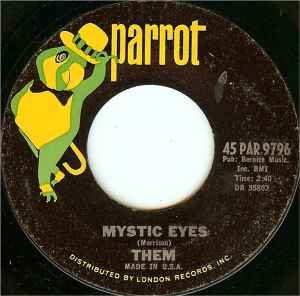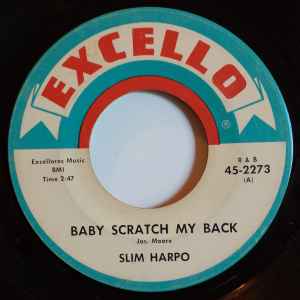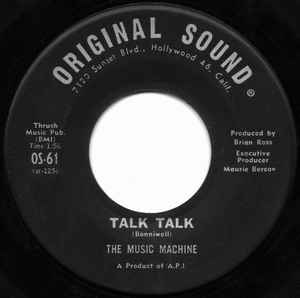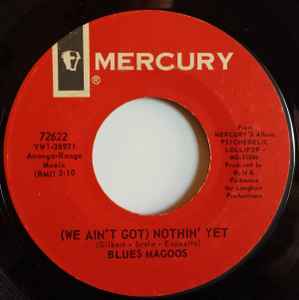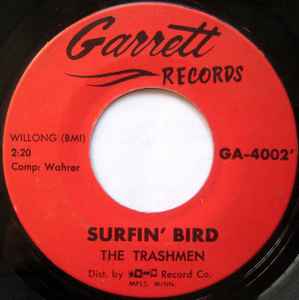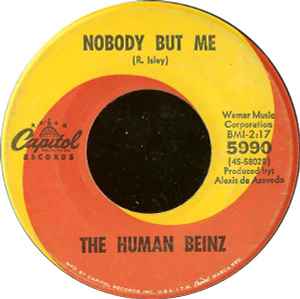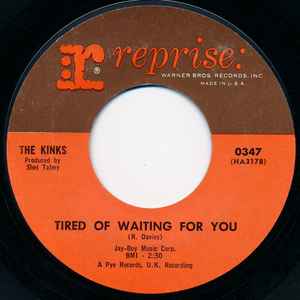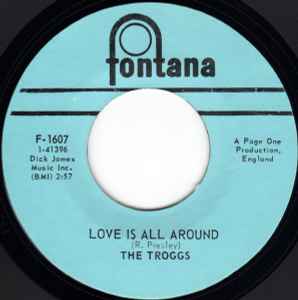Tracklist
| A | Mystic Eyes | 2:40 | |
| B | If You And I Could Be As Two | 2:50 |
Credits
- Written-By – Morrison*
Barcode and Other Identifiers
- Matrix / Runout (A): DR 35807
- Matrix / Runout (B): DR 35809
Other Versions (5 of 21)
View All| Title (Format) | Label | Cat# | Country | Year | |||
|---|---|---|---|---|---|---|---|
| Mystic Eyes (7", 45 RPM) | Decca | F. 12281 | UK | 1965 | |||
New Submission | Mystic Eyes (7", 45 RPM, Single) | Decca, Decca | F 12281, 45 - F 12281 | Italy | 1965 | ||
Recently Edited | Mystic Eyes (7", 45 RPM, Single) | Decca | DL 25 212 | Germany | 1965 | ||
| Mystic Eyes (7", Single, 45 RPM) | Parrot | PAR. 9796 | Canada | 1965 | |||
New Submission | Mystic Eyes (7", 45 RPM, Promo) | Parrot | 45 PAR 9796 | US | 1965 |
Recommendations
- Released1968 — USVinyl —7", 45 RPM, Single, Styrene
- Released1966 — USVinyl —7", Single, 45 RPM
- Released1966 — USVinyl —7", 45 RPM, Single
- Released1966 — USVinyl —7", 45 RPM, Single, Styrene
- Released1963 — USVinyl —7", Single, 45 RPM
- Released1967 — USVinyl —7", 45 RPM, Single
- Released1965 — USVinyl —7", 45 RPM, Single, Styrene
- Released1968 — USVinyl —7", 45 RPM, Single, Styrene, Mono
- Released1967 — USVinyl —7", 45 RPM, Single, Styrene
- Released1965 — USVinyl —7", 45 RPM, Single, Mono
Reviews
 Why an artist seems to find it necessary to reinvent how or under what circumstances a song was brought to light always baffles me … yet within only a few years, I would see Van Morrison in a silver suit hanging from the velvet curtains of the Fillmore Auditorium in San Francisco, wacked out of his mind on one thing or another, though alcohol did appear to be his substance of choice.
Why an artist seems to find it necessary to reinvent how or under what circumstances a song was brought to light always baffles me … yet within only a few years, I would see Van Morrison in a silver suit hanging from the velvet curtains of the Fillmore Auditorium in San Francisco, wacked out of his mind on one thing or another, though alcohol did appear to be his substance of choice.
Back in 1965, just prior to purchasing this record, which from static laden AM radio airplay, and over a lousy transistor radio, I believed that the song was entitled “Mr. Guy.” Nevertheless, Morrison had explained to a reporter that “Mystic Eyes” was originally intentioned to be an instrumental, though after blowing his harp for some ten minutes, drifting in and out of the beat, he professes that the lyrics where channeled to him, and he just sung along, acting as a conduit, totally unaware of the twelve minute take that was edited and condensed by cutting both the instrumental from the beginning and the end. Being originally recorded in mono* only [recorded at the Regent Sound a mono studio in Denmark Street in London England], mono is the only manner in which this song should be heard, as the recording room was set up for that initiative, and the stereo reprocessing leaves much to be desired. What does come across magnificently clear is the lead guitar by Jimmy Page, foreshadowing what was just around the corner for him and a little known band called Led Zeppelin.
Other tall tales surrounding this achievement embrace the notion that the band was just fooling around when Page laid down his guitar run, and again, everyone was divinely inspired, joined in, and the song manifested out of the blue. Of course there’s the other version that suggests that Morrison was inspired to write the lyrics while watching group of children playing in an ancient graveyard saying, “You know, man, there was all this life and death side by side of each other … so close … yet so different. And then I though of bright lights in the children’s eyes, and the cloudy lights in the eyes of the dead.” And again, we have Van invoking the divine, suggesting the power of bright lights coming from children, while lights from the eyes of the dead fade over time perpetually into the future, had burned the song into his soul.
Regardless, the song is brilliant, dark, haunting, ethereal, and unlike anything floating across the airwaves at the time, and while not intended to be the first single to be released in support of the album, “Mystic Eyes” was the single that charted and brought the band Them to the attention of the world. And while this song, or the album, did not bring this young band instant success, it did solidify Van Morrison as a solid artist with a penchant for writing story like verses that were nearly musical snapshots. Combine this with his ambitious beat and R&B undercurrent, and it was impossible not to understand that Van Morrison had a direction in mind, a concept, a vision of where he wanted to go, and how he wanted to get there. Simply listening to “Mystic Eyes” takes you on an adventure that’s not part of the collective album as a whole, meaning that Morrison stood out as a musical figure that we’d come to embrace as a solo artist, taking us to dizzying heights all on his own, all in the age of rock n’ roll bands.
Post Script: I for one sincerely hope that the original take for “Mystic Eyes” was not left on the cutting room floor, and that it may one day find its way to us … though sadly, it’s probably been lost to the ages.
*Duophonic is a term used to refer to a sound process by which a monaural recording is reprocessed into a kind of "fake stereo" by splitting the signal into two channels, delaying the left and the right channels by means of delay lines and other circuits, desynchronizing the two channels by fractions of a second, and cutting the bass frequencies in one channel with a high-pass filter, then cutting the treble frequencies in the other channel with a low-pass filter. The result was an artificial stereo effect, without giving the listener the true directional sound characteristics of real stereo. In some cases, the effect was enhanced with reverberation and other technical tricks, sometimes adding stereo echo to mono tracks in an attempt to fool the listener.
Duophonic was used as a trade name for the process by Capitol Records for re-releases of mono recordings from June 1961 through the 1970s. Capitol employed this technique in order to increase their inventory of stereo LPs, to satisfy retailer demand for more stereo content (and help promote the sale of stereo receivers and turntables). For nearly ten years, Capitol used the banner "DUOPHONIC – For Stereo Phonographs Only" to differentiate their true stereo LPs from the Duophonic LPs. Other companies used other names. Nevertheless, with reprocessed music [unless the technique was used on purpose, as The Beatles did in the studio to achieve effects] what you are not getting the quality that was originally delivered.
Release
For sale on Discogs
Sell a copy10 copies from $3.00
